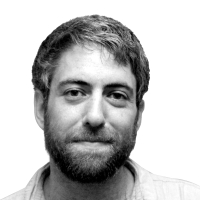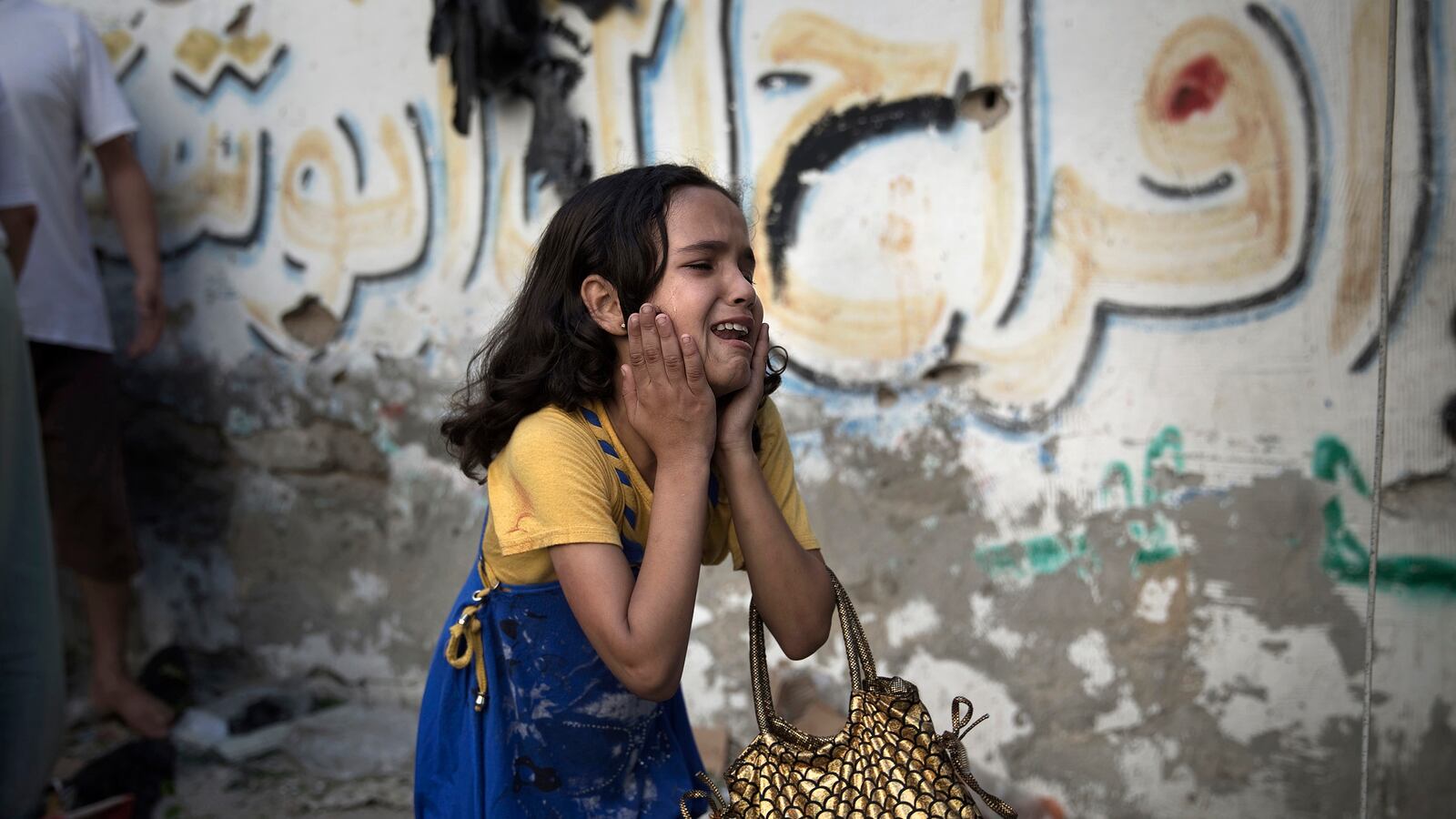GAZA CITY — The bombs continue falling, more and more people are running for their lives with fewer places to go and as the screams from beneath the wreckage of Israel’s assault become more frequent, a generation of Gaza’s children are being shaped by what they see. And yet, as kids often do, they can still surprise you.
Inside a Gaza City UNRWA school that’s been turned into a shelter, children pack the courtyard. Several are kicking a soccer ball around. A blue United Nations flag sits atop the building and the windows below are draped with laundry that spills out onto lines that crisscross the outdoor walkways. The stench of the backed-up toilets combines with the fumes of garbage fermenting in the midday sun. Inside, piled desks covered in sheets in the hallways partition makeshift rooms for the families.
There are now some 200,000 people in Gaza living in conditions like this, and many if not most of them are children. At least half of Gaza’s people—that is, 900,000 of the people here—are under the age of 18.
When I enter the school building, I’m mobbed by dozen of perplexed and energetic kids tugging at my flack jacket. In fact, I feel strange decked out with protective combat gear in a sanctuary for families fleeing the fighting. But UNRWA shelters have been hit many times by Israeli shells and bombs in this three-week war. Just this morning, 16 people were killed in an UNRWA school/shelter in Jabaliya. So I wear the jacket.
The children, of course, have no such protection. For the most part the ones here are under ten years old. None has ever left the narrow and overcrowded 40-kilometer strip of land called Gaza. They cannot remember a world without Israel’s seven-year blockade. They are living through their third war.
Ten-year-old Yasmine al Attar stares at me from under her dark curled bangs. She’s full of curiosity as she follows me around the school in her pink tracksuit pants, black spangled shirt and blue plastic shoes, listening to every word as I talk with parents about the difficulties caring for their children packed into schoolrooms with several other families.
The al Attar family, an extended clan of uncles and aunts and cousins several times removed, fled their Beit Lahia homes near the Israeli border more than two weeks ago as Israeli air strikes and artillery fire intensified.
Yasmine’s aunt, Hula al Attar, tells me her son can’t sleep amid the nightly air strikes. Instead he howls and shakes. “My 11-year-old son saw bodies in the street in the [2008] war and he still can’t forget those images,” says the veiled 29-year-old mother.
Yasmine speaks up. She tells me she can’t sleep either, and waits out the attacks by clinging to her mother in a corner classroom. I ask her what she wants to be when she grows up.
“I don’t know if I will live,” she says flatly. When pressed for what she would like to be if she does survive, she becomes excited thinking about the possibilities. “I’ll be a doctor,” she says at first. Then she changes her mind. “I’ll be a journalist,” she says, pulling on her brown curls. “I just want to do something that helps people and tells the world what’s happening.”
There is a surprising sense of realism in the aspirations of these young Gazans. Yasmine can imagine peace. She can imagine she is no longer living in a blockaded strip of land, that she can travel freely and no longer worry about shortages. And she says she admires the Palestinian fighters, led by Hamas, who are, as she understands the situation, trying to repel the Israeli attackers.
But Yasmine isn’t looking for a Muslim warrior’s martyrdom. Like the other children here she’s looking for someone to defend her: doctors, journalists, fighters—and those are the people she wants to be some day. It is an attitude reflected by many of the children who mask their trauma behind unwavering smiles as they bubble with chatter about the devastation they’ve seen.
Mohammad al Attar, also 10, pushes through his friends and cousins until he’s standing in the center of the semicircle of his peers who’ve gathered around me. He’s short for his age, he’s swimming in his baggy tee shirt, but he wants to be heard above the clamor. He rubs his hand over his buzz-cut black hair, waiting impatiently until he has a chance to talk about his thoughts and aspirations.
Mohammad says he wants to be a teacher if he has the choice. But, if nothing has changed by the time he grows up, he says, he knows he will fight. There is no malice in his voice. For this 10-year-old there are no childhood fantasies about the romance of war or political delusions about a grand victory. He’s making an honest calculation about the possibilities. “I just want to protect people,” he says.
It is not Hamas propaganda, the school curriculum or even their parents that make these children see a future where continued resistance is the only option for survival. That was an education taught by the Israeli bombs that flattened their homes and by the bread lines across the street from the school.




